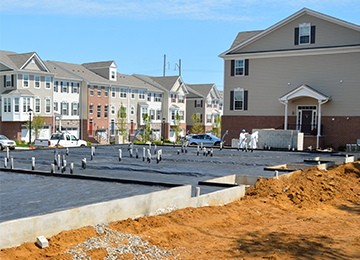The “Vapor” in vapor intrusion is not caused by some medical malady or bodily function as thought in Victorian times, nor was it the cause of fainting spells of Civil War era southern belles. Instead, it is the result of organic (and some inorganic) compounds that have low vapor pressures simply being released from a liquid state to a gaseous state. Fortunately, this is not a chemistry lesson on the physics of how or why this happens, so just go with me on this.
So what are some of these organic compounds and where do we find them? If you develop or repurpose real estate for new uses, you may be concerned with chemicals used in manufacturing (textile and furniture) and industrial processes (metal fabrication), dry-cleaning operations, gasoline stations, and vehicle repair facilities, also known as garages. The chemicals we find associated with these businesses are commonly referred to as solvents and include a suite of chlorinated hydrocarbons such as tetrachloroethene (aka tetrachloroethlyene, perchloroethlyene, PCE, and Perc), trichloroethene (trichloroethylene, and TCE), 1,1,1-trichloroethene (TCA), and various dichloroethenes (I know I said this would not be a chemistry lesson, but I have to drop a few big words to impress you). These solvents were used to degrease metal parts, clean clothes (dry-cleaning), and as carriers in the textile dyes. If you are a hunter or gun owner, the gun cleaner you use probably has a lot of TCE in it. Petroleum compounds associated with gasoline stations and garages include benzene and naphthalene, as well as some of the solvents discussed above—think parts cleaners in a garage. If you really want a wake-up call, start looking at the ingredient list on many of the cleaning products under your sinks and in your bathroom cabinets. And while Radon gas is not a vapor in the context of our discussion, it is well understood and is commonly used as an analogy when discussing vapor intrusion.
Now your chemistry nightmare is over and you have some idea of where these “vapors” may be coming from. Next time, we will discuss how they intrude into our space. So until then, hold your breath.
Read the Series:
Who Is Intruding My Space? Vapor Intrusion, Part II
Where is Vic? Vapor Intrusion, Part IV
Bye, Bye VIC, Vapor Intrusion Part V
About the Author: John Stewart, PG, CPG
Mr. Stewart is a Chief Geologist for ECS. He has conducted hydrogeologic site investigations at a variety of sites including NCDOT Right-of-Way corridors, Brownfields properties, landfills, industrial sites including textile and furniture plants, chemical manufacturing plants, commercial shopping facilities, dry cleaners, and gas stations.

